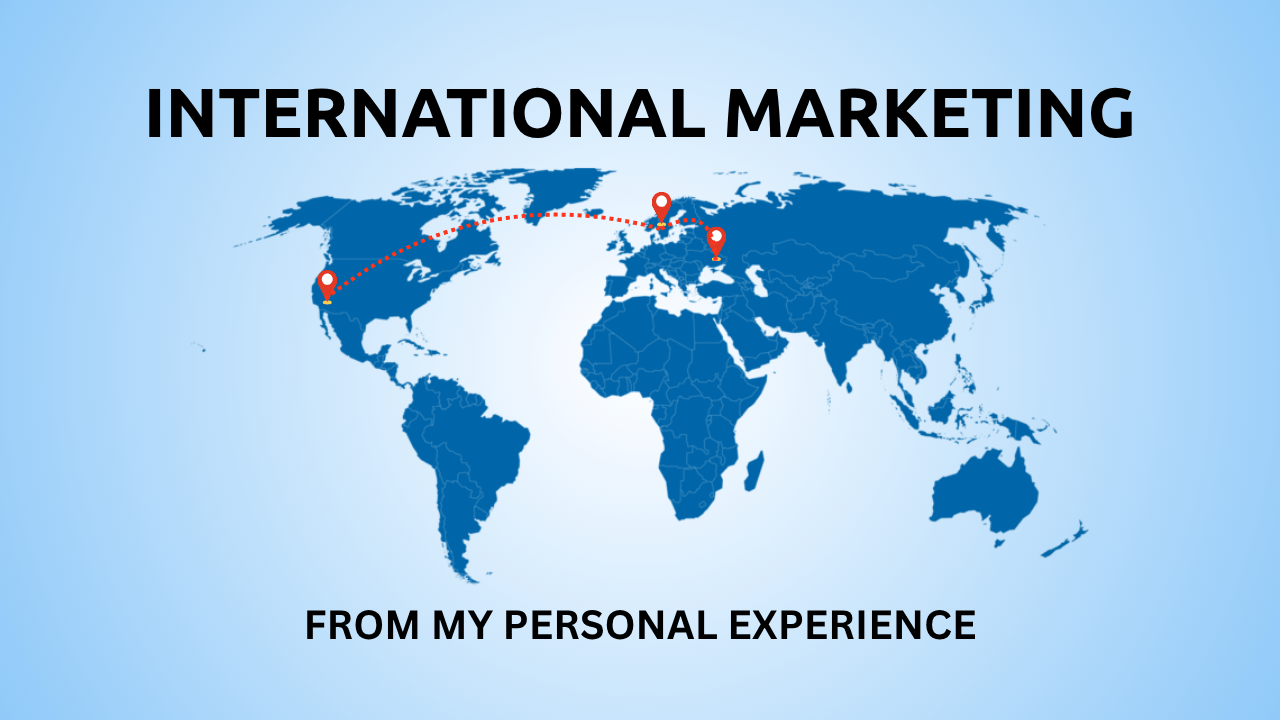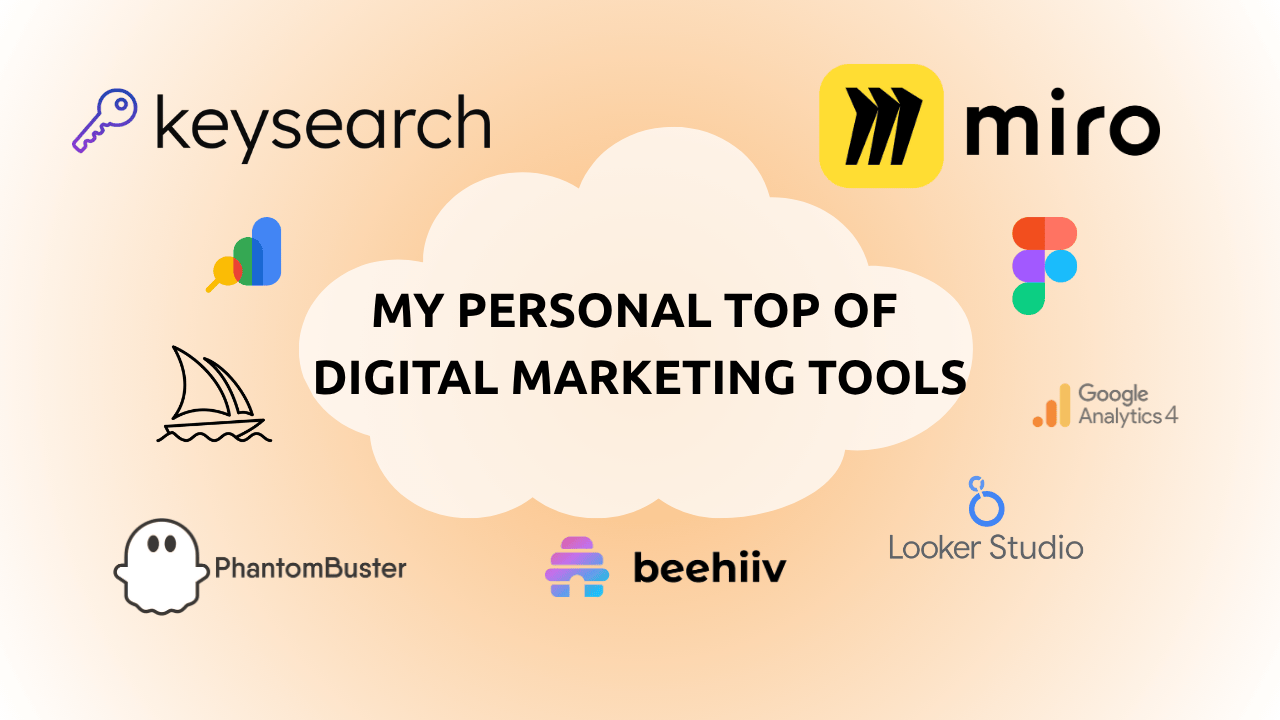Marketing changes across countries: From 3 markets I lived in

During my marketing career, I luckily had a chance to work in different countries and regions. That includes countries of Eastern Europe (Ukraine/Russia), Western Europe (Sweden), and the United States.
When I just started, I thought that switching between different markets would be relatively easy. You just study the competitors, do market research on Google, find marketing strategy examples, and voila—you are good to go.
I was SO wrong.
It was so much more than just switching to the local languages. You also need to consider cultural norms, lifestyle, the tone of voice people are more attracted to, channels that are more commonly used in this region, and how people perceive the ads they are seeing.
I didn’t know any of that.
I’m writing this article just to share my point of view on how I see marketing, specifically in the regions and countries I have experience in, and what you could use to do international marketing.
And of course, before you move on to global marketing, you need to master marketing fundamentals first.
Why is it important to understand cultural differences?
Without acknowledging and understanding cultural norms and differences, there is no point in building your marketing strategy at all (at least that’s what I think).
Global marketing sounds very exciting and cool, and you want to be on the list of companies that do that, but it comes with a lot of extra work. Unfortunately, you cannot just copy and paste your digital advertising campaign and put it in a different market. It just won’t work.
Don’t get me wrong, some countries are quite similar in their cultural preferences and consumer behavior, but those are rare, and you have to be 100% sure about that before you launch an international marketing campaign.
Understanding all the market specifics will help you define distribution channels, tone of voice, values that your target audience has, their pain points, and so much more.
What is the best way to explore global marketing?
You can’t Google that or do simple market research; you can’t really read about it either. The only way that I find helpful is to talk to somebody who’s local or who has been raised in the country that you want to expand to.
Hire a single person or a team that already works in local marketing (or maybe even global marketing). It can be an in-house or freelance team. You can just take a single consultation; it is going to be much better than assuming things you can’t possibly know.
You don’t know what you don’t know.
You can potentially look at what other companies are doing with their global marketing initiatives, but again, if you don’t understand the culture, you will not be able to figure out why this particular thing is working or not.
Local market overview
I’m going to share some of my perspectives and things that did not seem obvious to me when I switched to a different market that I could not figure out just by doing market research.
Note that I will talk about my personal experience and perception. Your experience could be different than mine, and you might not have the same opinion.
I also don’t want to generalize, saying that all people act the same way. There are always exceptions, people who behave, think, and talk differently from the rest.
But if you want to know my opinion and how I see these cultural differences and use them in marketing, keep reading.
Eastern Europe
I grew up in Eastern Europe (particularly Ukraine), so I know some fundamental things about this specific market and how people sell.
I want to start with influencer marketing, because I believe that by analyzing influencers and why people like them, you can understand a lot about the culture. It also expands on selling different products via social media platforms, ad perception, and messaging that works best for people.
To me, it feels like influencer marketing in countries like Ukraine is all about showing true emotions, feelings, and behind-the-scenes processes.
People want to see real lives and drama, hear tough stories, and witness some action. You should either be very open about your feelings and thoughts, give a lot of value, or entertain people (or all at once).
Don’t get me wrong, people like entertainment everywhere, but it’s going to be harder to sell if you concentrate purely on entertainment content.
Influencers in Ukraine sell tons of courses through their Instagram accounts. One of the most popular selling points is showing your life before and after. Look how poor I was and how rich I am now, kind of thing.
This practice is commonly used in other countries as well, but I feel like in Ukraine it has a much higher scale.
Another thing to mention is the visual part. People in Eastern Europe care a lot about the look. It’s important to have high-quality content and have a matching style of colors, fonts, and tone of voice; overall, you need to maintain brand consistency even for your own social media account.
The products themselves (courses, guides, ebooks) are different as well. Most of the courses are overpriced (compared to the average local salary).
On the other hand, most of the time you have a lot of mutual chats, support from mentors, task explanations, homework, and a bunch of other things that make you feel like you belong to the community.
I also want to touch on marketing channels briefly. In Eastern Europe, the most popular social media channels are Instagram and Telegram.
Telegram is basically a messenger (similar to WhatsApp), but it is much more popular and is used a lot for creating channels and building communities. It is often a substitute for traditional email marketing.
Best practices
- You should prioritize honesty, vulnerability, and emotions over polished characters and messaging (I'm talking mostly about influencer marketing right now.)
It doesn't mean that you should talk badly about your product, but showing behind-the-scenes and some difficulties that you or your product faced on the way would be appreciated and would build trust with your audience.
- Showcase transformation and results. It can be a personal success story or a story about how your product helped you and now will help others earn more money/get fit/get a dream job, etc. Please don't lie and exaggerate here. Be honest (back to the first point).
- All content and visuals you produce should be professional-looking, consistent, and clean.
- If you sell online products, make sure you not only offer high-quality products but also build a community around them with a lot of support, mentors, homework, etc.
- In your marketing strategy, prioritize platforms like Instagram and Telegram.
- Don't underprice your product, because that would look suspicious. Explain the value and show the results.
- Be careful with humor if you want to use any. Sense of humor is very different in different regions, and you don't want to look awkward or sound offensive. That is applicable to all markets.
Examples
I will share some of the successful examples of personal brands and companies that do their marketing great. Obviously, those examples will be in the Ukrainian language, but you can check the styling and the page layout to get a better understanding of what I’m talking about.
- Tanya: Influencer, strong personal brand, and two online courses that she creates and sells.
- cher17: A brand of clothes, has a very strong presence and bold marketing ideas.
- Laba: Online school for marketing, HR, sales, and business management. Have a strong presence across multiple channels like IG, LinkedIn, and YouTube.
Western Europe
Western Europe is big and contains a lot of countries. That’s why I can’t talk about all of them at once. As I already mentioned before, I was working in marketing in Sweden; that means I can only advocate for Scandinavian countries, which are quite similar.
Have you ever heard of the word "lagom"? That is a Swedish word which means “just the right amount.” It can be applied to a lot of things, but the most common ones are work-life balance, mindful consumption, daily routines, etc.
The reason why I’m mentioning this word is because to me it feels like that’s what lies at the core of their culture and cultural preferences.
They don’t want to rush things; they want to enjoy the slow living, fika (a tea/coffee break with pastries at noon), and time with their family. That is a very important thing to take into consideration.
Another thing to mention is that they care a lot about nature, eco-friendliness, recycling, and helping the planet. This is important if you create physical products and want to be not only in trends but also in favor.
Beauty standards are also different in Eastern Europe and the USA. People value more natural beauty and natural bodies. Again, it doesn’t mean that nobody wears makeup and nobody goes to the gym. People are just a little bit less obsessed about it.
Best practices
- Talk about how your product or service can help to make the lives of your potential customers better. Highlight work-life balance and well-being.
- If you create a physical product, show care for the planet. Be transparent about the materials that you use in your production and how you recycle the waste.
- Avoid bragging and overpromising; this probably wouldn't work in this market. Be honest about your product; explain its worth in a simple and accessible way.
- Try to focus more on quality rather than status. I noticed that people don't care that much about how expensive something looks, but care about durability and uniqueness.
- Do not try to sell aggressively in countries like Sweden. Everyday call-to-actions and FOMO-style promotions will not perform well. Share insights, educational content, and behind-the-scenes stories.
Examples
In Nordic countries, you can see English content pretty often, so it is going to be easier for you to check the examples that I will give. Enjoy :)
- Estrid: They sell razor blades for women along with shaving and bath products. Have a strong presence across multiple channels.
- Stronger: A brand of sports clothes that is also doing international marketing. I have a couple of pieces from them myself :)
- Kenzas: A Swedish lifestyle influencer. Talks about motherhood and fashion.
USA
This is an extremely interesting and diverse market. I think some of the best marketing ideas were born here. I also think Americans are some of the best salespeople.
It is important to say that the United States is huge, and different digital marketing practices can vary according to the state. But I will share some of the things that I consider important to highlight.
I personally feel like in America, you need to stand out. You need to be creative and bold, come up with new, crazy ideas, explore, and use all the channels possible to promote your product or service.
It is a place of opportunities, but also a place of huge competition. I think because of that, a lot of companies use aggressive marketing, a lot of cold outreach, cold calling, spam emails, FOMO-style messaging, etc.
Again, I’m not generalizing; not all the companies are like that, but I’ve seen it here much more than I did anywhere else.
One of the marketing models that is widely used here is multi-level marketing (MLM), or network marketing, where you encourage individuals to sell your company’s products directly to consumers and recruit other sellers to do the same in order to earn a commission.
Affiliate marketing is very popular due to a high demand.
It's all about how to push, how to make more money. That encourages companies to come up with new, interesting ideas.
One thing that I like and find useful, and that successful American companies do a lot is research studies. It is when you ask people a bunch of questions in order to figure out their needs, pain points, problems, and desires, and create a product that would meet their expectations and sometimes even exceed them.
To me, it feels like America collects the whole marketing mix of all the tactics, channels, and global and local trends and just blends it all together. A lot of cross-cultural marketing is happening here too, because of the cultural diversity.
Best practices
- Be bold and creative, and try to stand out. I know it is easier said than done, but you need to come up with something unique; otherwise, you won't survive in this market.
- Use all available channels. I know everybody talks about identifying your target audience and then figuring out what would be the best channel to reach them, but I feel like here you need to try and experiment with everything and be present in as many places as possible.
Of course, you still need to adjust to your audience and their communication style, but multichanneling is the key here.
- Do a lot of customer research and know what your audience wants and needs. I think that will help you to hit the right audience faster, and it is essential here due to high budgets.
- You need to highlight success and achievement and have social proof. There are so many competitors that if you can't prove that you are worth going to not a lot of people will become your customers.
Examples
- YoungLA: A brand of sports clothes that uses influencer and affiliate marketing as its main promotion channels. They are also known worldwide, which means they are doing international marketing.
- Rhode: Everybody knows the cosmetics brand Rhode and how fast it has grown. They started to do international marketing too. What I love about the brand is that they did a lot of customer research and came up with a phone case that holds their lipsticks.
- Faith Fresh: I don’t think I need to give you great examples of American influences, because you probably know more of them than I do. But this girl found a way to share recipes and cooking processes in a fun and entertaining way.
Closing thoughts
I truly believe that each market has a unique marketing mix. I think companies often forget that they sell to people and talk to people. That's why when you do your digital marketing, the first thing to do is to study local audiences.
You need to put yourself in your customer’s shoes to see and understand what will resonate with them, and that will help you approach your marketing strategy better.
Every nation has a unique culture and cultural norms, a set of preferences, and a mindset. It is so important to connect and to feel people on this fundamental level.
Besides all of that, it is important to consider advertising regulations and legal frameworks, because what is legal in one country might be completely illegal in another (shocker).
For example, in Norway, you can’t post before-and-after pictures of certain cosmetic procedures and plastic surgeries, even though it is possible in Denmark and Sweden.
The content on this site is for informational and entertainment purposes only and should not be taken as financial advice. For full details, see the disclaimers section.

Subscribe for marketing advice
I'd actually give a friend
Join our mailing list and never miss a story.



